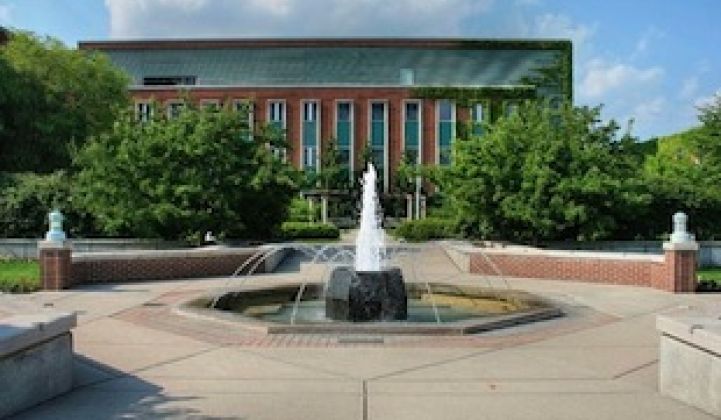Launched last spring, the Obama administration’s Better Buildings Challenge recently reported the summary results of its first year in existence: 7,700 participating structures have reduced energy consumption, on average, by 2.5 percent across the board and achieved savings of roughly $58 million. The eventual goal of the program is to reduce energy usage by 20 percent by 2020.
Of those 7,700 participating buildings, 1,300 have already reached the 20 percent goal, based on their individual baseline years, and 2,100 have reached a 10 percent reduction goal. The partners in the program have completed more than 50 showcase projects, the administration said, showcasing innovative, cost-effective strategies.
For instance, Better Buildings participant Michigan State University has committed 20 million square feet of its buildings to the program. Through various methods such as submetering buildings and conducting continuous energy audits, MSU’s buildings have achieved a 10 percent reduction in energy consumption since its base year of 2010. Some of the structures include the 380,000-square-foot Veterinary Medical Center, the 190,000-square-foot Plant Biology Laboratory and multiple 500-square-foot storage facilities. MSU officials expect to cut energy use by 34 percent per year and save about $536,000 annually.
Kohl’s department stores have committed 112 million square feet of space to the program, involving more than 1,000 stores nationwide. In this first year, Kohl’s has achieved a 7 percent reduction in energy intensity since its 2008 baseline year. One Kohl’s facility in Niles, Ohio reached a 20 percent reduction milestone, the store reports, by replacing its rooftop heating and cooling unit, upgrading its lighting systems and modernizing its energy control systems.
Another program partner, electrical products manufacturer Legrand, has reduced energy use by 29 percent across five of its plants and another nine non-manufacturing facilities, compared to its 2009 baseline year. Most notably, Legrand renovated its 100-year-old headquarters building in West Hartford, Conn., repairing leaks in its compressed-air system and adding insulation to its existing paint-line ovens. The company expects these improvements to save more than $120,000 annually.
Partners that have joined the Better Buildings Challenge since 2012 have collectively invested more than $1.1 billion in private financing for these energy efficiency improvements. According to the federal government statistics, U.S. commercial and industrial buildings account for about half of the nation’s energy use and are responsible for more than 40 percent of the country’s carbon emissions.
***
Editor's note: This article is reposted in its original form from EarthTechling. Author credit goes to Randy Woods.



